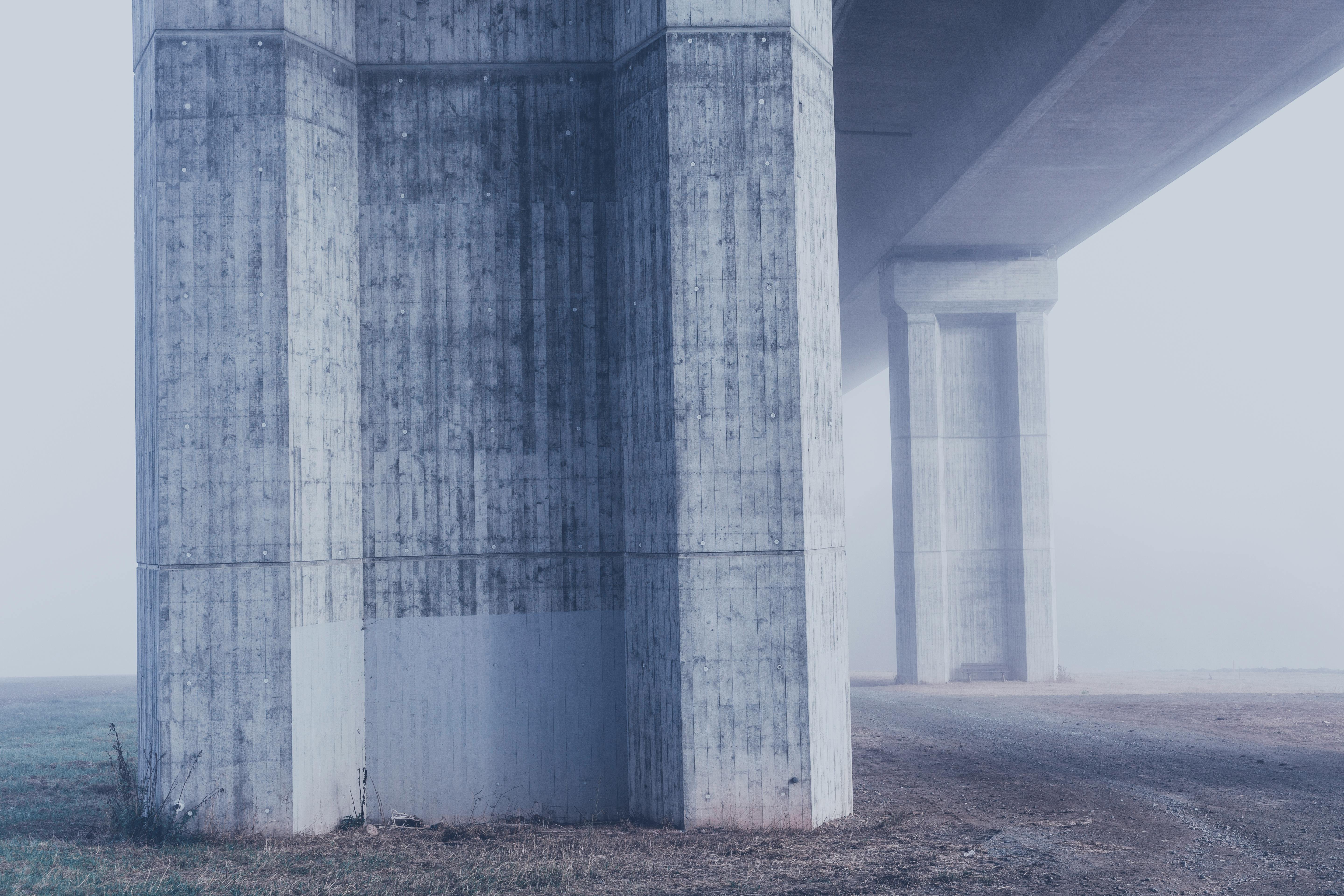Distillation is a process used to separate mixtures of liquids. The liquid mixture is heated and vaporized, then the vapor passes through a distillation column where it is condensed back into a liquid. The distillation column works by allowing different components of the mixture to separate based on their boiling points. The higher boiling point components will condense at the top of the column, while the lower boiling point components will condense at the bottom. This process allows for the separation of liquids with different boiling points in one step.A distillation column is a type of equipment used in the chemical industry for the process of separating mixtures into their component parts (or fractions) based on the differences in their volatilities. It works by heating the mixture to a temperature at which one or more components vaporize, and then condensing and collecting the vapors separately. The condensed liquid is then collected and re-distilled to further purify it. Distillation columns are used in many industries such as oil refineries, petrochemical plants, fractionating columns, and water treatment facilities.
What Does a Distillation Column Do?
A distillation column is an essential piece of equipment used in the refining and chemical industries. It plays a vital role in the separation process of mixtures, allowing them to be broken down into their individual components. Distillation columns use thermal energy to heat the mixture and evaporate the desired components, which are then condensed and collected at different points on the column. The column also uses gravity to help separate the more volatile components from heavier ones. This process can be repeated several times until the desired level of purity is achieved. Distillation columns can also be used to purify water or other liquids, as well as many other applications.
Distillation columns are made up of several components, including a condenser, reboiler, and trays or plates. The condenser is used to cool and condense vaporized components as they rise up through the column. The reboiler is typically located at the bottom of the column and provides heat for vaporizing liquid portions of the mixture that have settled to the bottom. The trays or plates within the column are designed to hold liquid mixtures that remain after vaporization has occurred, allowing for further separation as more heat is added.
The efficiency of a distillation column depends on various factors such as temperature, pressure, flow rate, reflux ratio and number of trays/plates. A higher reflux ratio (the ratio between liquid coming back into the column from higher levels compared to liquid going out from lower levels) will result in a more efficient separation process while higher temperatures can lead to faster evaporation rates. Conversely, too much pressure in a system can reduce efficiency by increasing back-mixing among different sections of the system.
In summary, distillation columns are an important tool in industrial processes that involve separating mixtures into their individual components. They use thermal energy and gravity to evaporate certain components while condensing others at different points on the column before they are collected separately. By controlling various factors such as temperature, pressure, flow rate and reflux ratio it’s possible to achieve an efficient separation process with a high degree of accuracy.
How Does a Distillation Column Work?
A distillation column is a type of separation process that produces a refined product from a mixture of two or more liquids. It achieves this through the process of evaporation and condensation, which occurs when the vaporized liquid is cooled and condensed back into a liquid state. The distillation column is made up of several trays or plates, each with its own temperature and pressure. The liquid mixture enters the column at the bottom tray and travels upwards, where it is heated to its boiling point and then vaporized. As the vapor rises, it comes in contact with the cool trays above it, condensing into droplets that eventually fall back down to the bottom of the column. This process is repeated several times until all components in the mixture have been separated out into their respective products at their respective levels in the distillation column. The final product is then collected from the top tray and pumped out of the column for further processing or storage.
Distillation columns are widely used in industries such as food processing, oil refining, chemical production, pharmaceuticals, and biofuel production. They are also used to produce alcoholic beverages such as whiskey or vodka.
Principles of Distillation Columns
Distillation columns are used to separate compounds based on their boiling points. These columns consist of a series of trays and/or packing which hold the liquid mixture in contact with the vapour phase. The vapour passes up through the trays and/or packing, while the liquid flows down. As the vapour rises, it condenses and the liquid collects on each tray or in each section of packing. The heavier components stay closer to the bottom while the lighter components rise to the top. This process is known as fractional distillation and can be used to separate different compounds from a mixture.
The efficiency of a distillation column depends on several factors including reflux ratio, number of trays or sections of packing, type of packing, feed location, and column diameter. The reflux ratio is simply the ratio between the amount of vapor that is returned back to the column and that which passes out at the top as product. Higher reflux ratios lead to improved separation efficiency but also increase energy consumption. The number of trays or sections affects how many times a compound must pass through the column before it exits as either liquid or vapor at different points along its height; more trays provide for better separation but also require more energy for operation.
The type of packing material used in a distillation column affects its performance as well; different materials will have different surface areas which affect how much material comes into contact with each other during operation and thus how effective separation will be. Feed location is important because it determines where in the column material enters; higher feeds tend to lead to better separation but can also require higher temperatures for proper operation. Lastly, larger diameters tend to lead to better separation since they allow for more contact between liquid and vapor phases without sacrificing efficiency due to excessive pressure drops across them.
All these parameters must be taken into account when designing a distillation column in order maximize its performance while minimizing energy consumption costs associated with operation.
Components of a Distillation Column
A distillation column is an essential component of many industrial processes, and is comprised of several key components. These components include the reboiler, condenser, feed inlet, draw-off points, and trays or packing material. The reboiler is a heat exchanger used to add energy to the distillation column in order to vaporize the liquid that is fed into it. The condenser cools and condenses the vaporized feedstock so that it can be collected at the draw-off points. Feed inlets provide a way for liquid feedstock to enter the column and mix with the vaporized material within it. Draw-off points are used to collect both liquid and vaporized products from different stages of processing within the column. Trays or packing materials are used inside the column to increase contact between different phases within it. In addition, there may also be pumps or valves present depending on the specific needs of each application. All these components work together to separate liquids into their various constituents through distillation.
The design of a distillation column depends on factors such as feedstock composition, desired product quality, operating pressure, and desired throughput rate. For instance, columns with smaller diameter will require more trays or packing material in order to achieve efficient separation while larger diameter columns will require fewer but larger trays or packing materials. Additionally, different types of feedstocks may require different types of trays or packing materials in order to achieve desired product quality. In general however, all distillation columns need some form of heat source (e.g., reboiler) as well as cooling source (e.g., condenser), some form of liquid and vapor draw-off points for collection purposes, and some type of tray or packing material for efficient contact between different phases within it in order for them to function properly.
In conclusion, distillation columns consist of several key components that work together to separate liquids into their individual constituents through distillation. These components include a reboiler for providing heat energy, a condenser for cooling and condensing vapors produced during processing, feed inlets for introducing liquid feedstock into the system, draw-off points for collecting both vapors and liquids from different stages of processing within the column, and trays or packing materials used inside the column in order increase contact between different phases within it. The design parameters associated with each distillation application will determine what type and size components are required in order for it to function properly; however all systems need some form heat source/cooling source as well as collection points and tray/packing material configurations for efficient operation

Types of Distillation Columns
Distillation columns are essential pieces of equipment in the chemical process industry, used to separate mixtures of liquids. There are several types of distillation columns that can be used depending on the desired purity of the output and other system constraints. The most common type of distillation column is a packed column, which consists of a vertical tube filled with packing material. This packing material provides a large surface area for vapor-liquid contact, thus providing efficient mass transfer between two streams. Another type is a plate column, which consists of multiple sieve plates placed vertically inside a vessel. The plates provide an increased surface area for vapor-liquid contact, resulting in better separation efficiency than packed columns. Vacuum distillation columns are also available for applications that require low operating pressures, such as when separating light hydrocarbons from heavier ones. In addition to these, there are also tray columns and centrifugal contactors that can be employed for specific applications.
No matter what type of distillation column is being used, it is important to understand the fluid dynamics within the system and how they affect separation efficiency and product quality. Properly designed systems can result in higher purity products with minimal energy consumption and environmental impact.
Use of Heat in a Distillation Column
Distillation columns are used in many industries to separate mixtures of liquids. The process involves the use of heat to increase the vapor pressure of one or more components in the mixture, and then separating them according to their boiling points. Heat is typically supplied to a distillation column by a reboiler at the bottom, which is used to heat up the liquid in the column. The heated liquid then rises through the column, where it separates into its components as it cools. The distillate is collected at the top while the remaining liquid is collected at the bottom.
The amount of heat required for a successful separation depends on several factors, including the type of components being separated and their relative amounts. Generally speaking, more heat is needed when separating more volatile components such as alcohols and less heat when separating less volatile components such as oils. Additionally, increasing the temperature increases the vapor pressure and thus increases the rate of evaporation. This can lead to faster separations but also increases energy consumption and can cause thermal degradation of some components if temperatures are too high.
To ensure that an optimal balance between efficiency and energy consumption is achieved, it is important to control both the temperature and pressure within the distillation column. This can be done by adjusting either or both of these parameters depending on what needs to be achieved. For example, increasing temperature can lead to faster separations but will also increase energy consumption; whereas decreasing temperature will reduce energy consumption but may lead to longer separations. Similarly, adjusting pressure can help achieve different separation objectives as well as control energy consumption.
In short, heat plays an important role in distillation columns by increasing vapor pressure and enabling component separation according to their boiling points. It is important that this process be carefully controlled in order to achieve optimal results while minimizing energy consumption and avoiding thermal degradation of components due to excessive temperatures.
Use of Pressure in a Distillation Column
Distillation columns are used in many industries to separate liquids from mixtures of liquids and solids. In distillation, the liquid mixture is heated, vaporized, and then condensed into two or more fractions. Pressure is one of the key elements that influence the performance of a distillation column and its ability to separate the components of a mixture. Pressure affects the boiling point of each component in the mixture, which affects how well they can be separated. It also affects the rate at which vapors are formed and condensed. By controlling pressure, it is possible to optimize distillation performance and maximize yield from a given mixture.
The pressure in a distillation column can be varied through various techniques such as using pumps or compressors to increase or decrease pressure. It can also be changed by adding or removing heat from the system. Increasing pressure will increase the boiling point of each component in the mixture, while decreasing pressure will decrease their boiling points. This allows for better control over which components are separated by controlling their boiling points relative to each other.
The use of pressure also affects other aspects of distillation performance such as throughput, residence time and energy efficiency. By increasing or decreasing pressure, it is possible to control residence time within the column and maximize throughput from a given system. The energy efficiency can be improved by controlling pressure as well – higher pressures require more energy for vaporization but result in shorter residence times which can reduce total energy consumption for a given process.
In conclusion, the use of pressure in a distillation column is essential for optimizing performance and maximizing yield from a given mixture. Pressure affects how quickly vapors are formed and condensed as well as how well individual components can be separated from each other based on their boiling points relative to one another. It also impacts throughput, residence time and energy efficiency when used properly within a system.

Conclusion
Distillation columns are an essential component of the chemical engineering process. They are used to separate components of a mixture, allowing for the production of useful products. Distillation columns work by using the differences in boiling points between the components of the mixture, which allows for the vaporization and condensation of each individual component. The column works by introducing a vapor into the column, where it passes through several distillation trays. As it passes through each tray, more volatile components are removed from the liquid and sent to the top of the column, while heavier components remain at lower trays. The different levels of temperature throughout the column also help to separate out different components in a mixture. Ultimately, this process allows for efficient separation and purification of useful products from a mixture.
Distillation columns can be used in a wide range of industrial applications, including petrochemical refining, water treatment, and pharmaceutical production. By using distillation columns to separate out different components in a mixture, chemical engineers can produce higher-quality products with greater efficiency and accuracy than would be possible without such technology.

